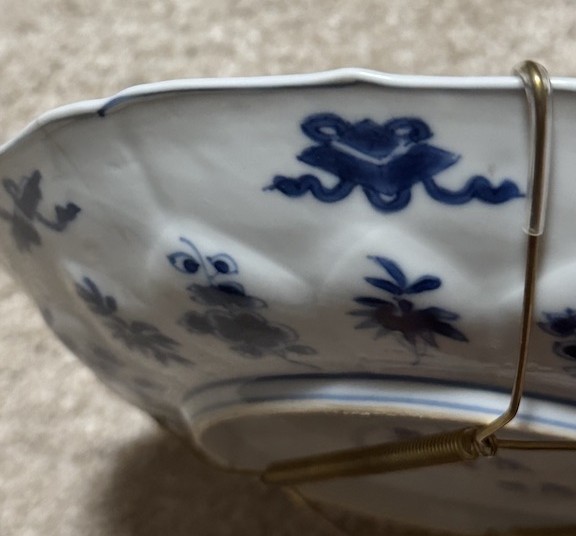
One of the most telling signs of genuine Kangxi period export porcelain is the use of press molding that is visible on both sides of the body, as if the body was actually a metal sheet of equal thickness, which the original probably was. This is beautifully illustrated in this photo.
Photo courtesy of Hannah Cheung ©: 2025
The process of molding are principally the same wether you use a plaster or clay mold to press or pour the wet paste into.
The technique is particularly popular when making complicated shapes in large numbers. Spout and handles for porcelain tea pots could be used as an example where casting could be the only practical method.
You can replicate the general shape of any ceramic piece by making molds, but clay is wet and contains a lot of water. Even after an unfired clay piece has dried, there remains a great deal of space between the clay or paste particles, that will collapse during the firing process when the piece basically melts. An unfired piece of porcelain will actually shrink anywhere between 20% and 30% during the firing process.
To reproduce an old piece at the same final size, you would need to make a new mold that compensates for this shrinkage. For example, to end up with a plate that measures 23 cm in diameter, you would need to make a new mold about one fifth larger or approximately 27 cm in diameter in its unfired state.
There is much to say about how this issue was handled at the ancient kilns, but one important detail is that they employed specialists specifically tasked with making molds. It is also worth remembering that size is critical to the authentication of imperial pieces, which would have been highly profitable if they could have been accurately reproduced from molds.
A